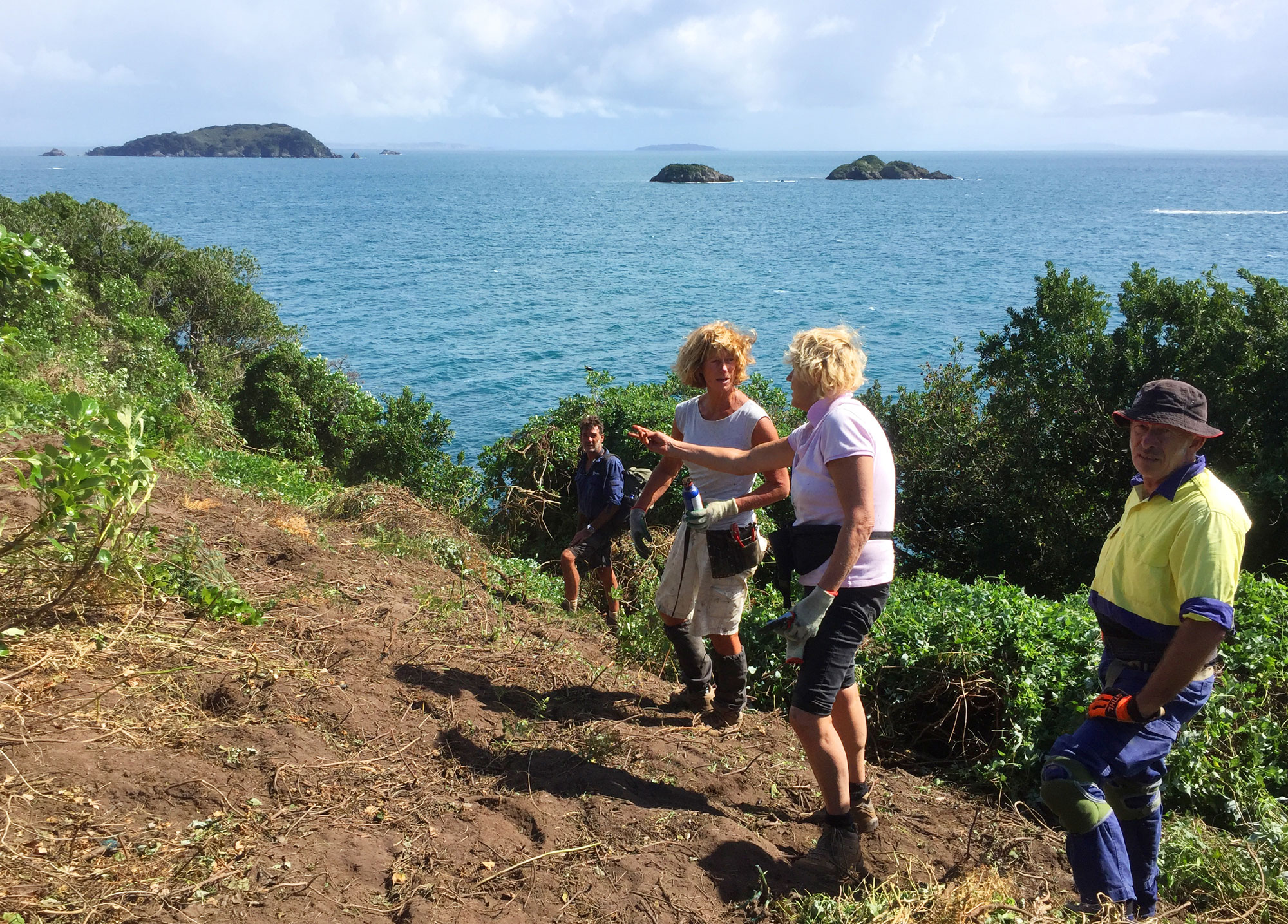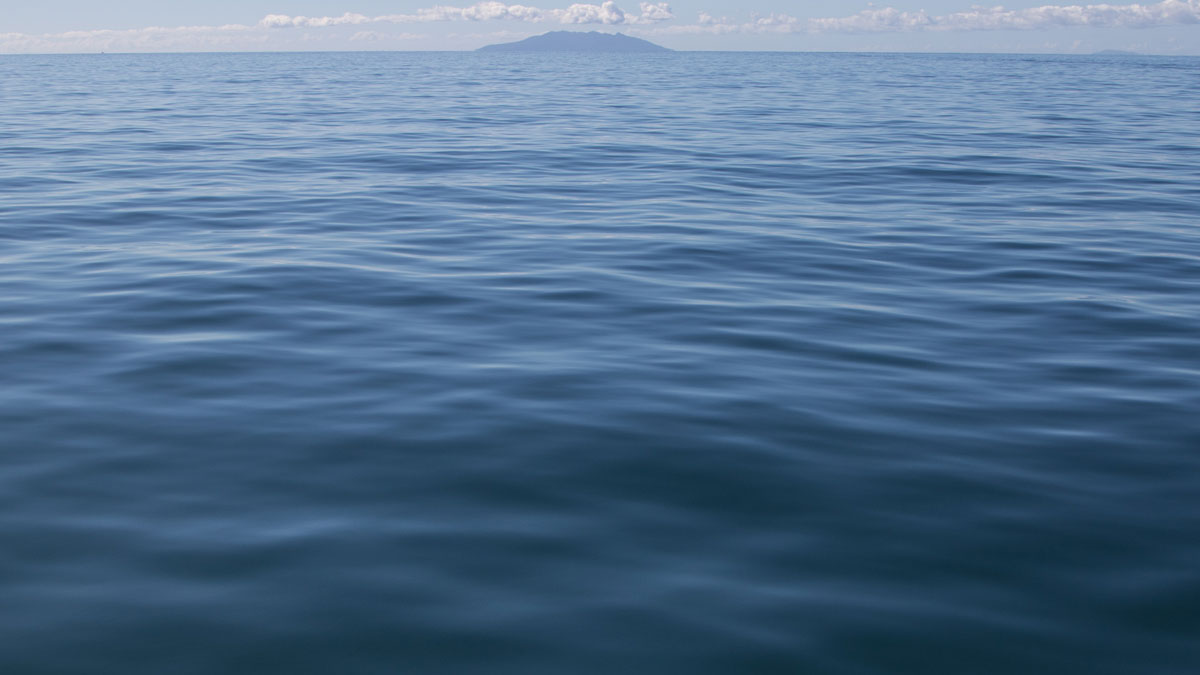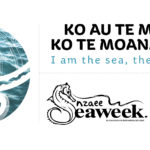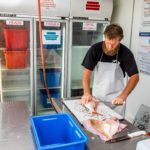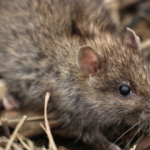Sue Neureuter:
Summer on the Noises has been challenging. We’ve seen ferocious storms, high mortality of seabird chicks, unprecedented foreshore erosion and a smothering algae on the reefs.
On the positive side we’ve had the support of an Australian NGO called “Wild Mob” www.wildmob.org , set up to enable travellers to contribute to environmental projects. Their help weeding gave us a massive boost, turning a usually tedious task into fun and new friendships. We expect they will be back.
Maritime New Zealand has agreed to raise the height of the light on Ruapuke (Maria) Island enabling us to target the “mile a minute” weed and re-establish native vegetation that is important for seabirds.
We have hosted visits from seabird researchers, archaeologists, botanists, marine biologists, Forest and Bird members and even an Al Jazeera film crew, all of whom have been generous with their knowledge.
Foundation North, which is supporting our work through the GIFT initiative, came out for a day.
We believe communication with mana whenua, scientists and stakeholders is important if we are to progress our aspirations for restoration of the marine environment surrounding the islands.
Perhaps these motu – special to so many – might become a learning platform, a way to re-engage young people and demonstrate a way forward for marine protection and cultural collaboration.
Jo Ritchie:
Rotoroa Island has had an unprecedented number of rat invasions this summer.
We know there were more than eight from bait take and tracking tunnel records, all of them Norway rats.
Rats were eradicated rats on Rotoroa in 2011 and we’ve had a few unwelcome summer visitors before – one rat in 2015 and two in 2017.
Like other predator free islands, we are well prepared – DOC 200 traps baited with tasty rabbit meat and egg, tracking tunnels with cards and “rodent motels”, their position fixed by GPS and marked on aerial photos.
When we find a rat body we do some Crime Scene Investigation. Thanks to Rachel Fewster at the University of Auckland and the smart people at Ecogene we have a database of rat DNA from many sites in the Hauraki Gulf and the mainland. This enables us to pinpoint where invading rats are coming from and encourage control at the source.
It appears the Rotoroa rats are coming from Ponui or Waiheke, involving swims of over 1km.
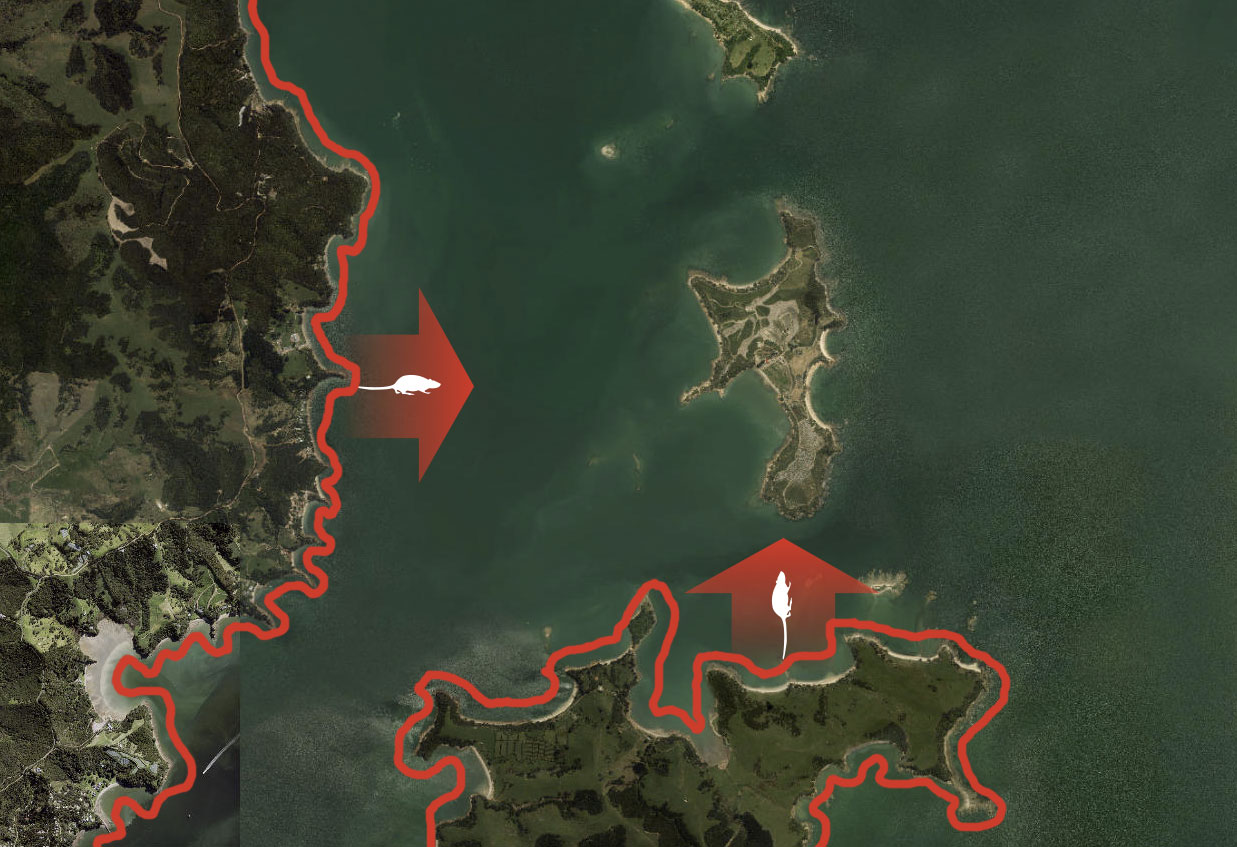
But exactly where is hard to pin down as rats can take advantage of currents, hitch rides on drift wood or debris in storms.
We appreciate predator control is undertaken by many islanders. Rats can be targeted around buildings, cover along beaches and wharves where rubbish may be stored. Traps and bait stations need to be well secured under cover, checked regularly and made as inviting as possible with fresh lures such as peanut butter or eggs.
Rats can also hideaway on boats and many recreational boaties who visit Rotoroa have island hopped and anchored off Waiheke or Ponui. A bait station on your boat is a helpful insurance policy.
The Auckland Council and Department of Conservation Treasure Islands website – www.doc.govt.nz/treasureislands – has tips on how you can help keep our islands predator free, and if you do see rat sign on Rotoroa please let our island staff know.


